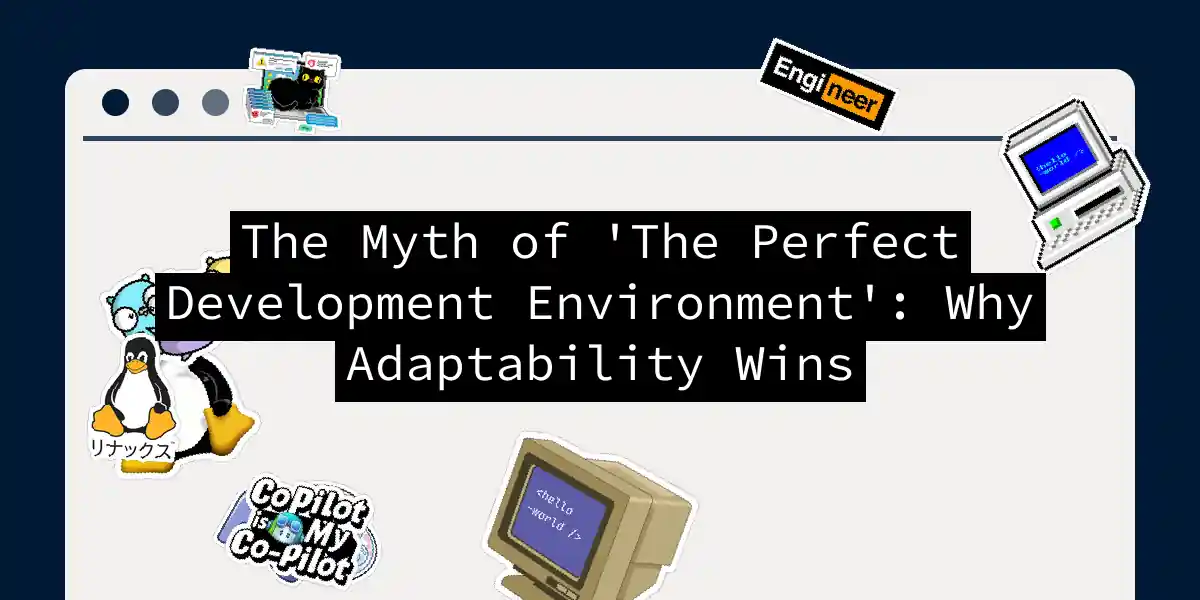The Elusive Dream of the Perfect Development Environment
In the world of software development, the quest for the “perfect” development environment is akin to searching for the Holy Grail. It’s a notion that has captivated many, promising a utopia where code flows effortlessly, bugs are nonexistent, and productivity soars. However, this idealized environment is more myth than reality. Here’s why adaptability, rather than the pursuit of perfection, is the key to success.
The Illusion of Perfection
Imagine a development environment where every tool, every library, and every configuration setting is tailored to your exact needs. Sounds too good to be true? It is. The reality is that development environments are dynamic and ever-changing. New technologies emerge, old ones become obsolete, and project requirements shift like the sands of the desert.
For instance, consider the early days of Windows development. Back then, the perfect environment might have included tools like Visual Studio for Windows NT and Windows 95, along with SQL development tools. Fast forward to today, and you’d find that the landscape has changed dramatically. Modern development involves a myriad of frameworks, languages, and tools that didn’t exist a decade ago.
The Importance of Adaptability
Adaptability is not just a virtue; it’s a necessity in software development. Here are a few reasons why:
1. Technological Evolution
New technologies and frameworks are constantly being developed. What was perfect yesterday might be outdated today. For example, the rise of mobile and web development has led to the adoption of new tools and methodologies that didn’t exist a few years ago.
2. Project Requirements
Each project has its unique set of requirements. What works for one project may not work for another. Being adaptable allows you to quickly adjust your environment to meet the specific needs of each project.
3. Team Collaboration
Development is often a team effort. Different team members may have different preferences and workflows. An adaptable environment allows for greater flexibility and collaboration.
Building an Adaptable Development Environment
So, how do you build an environment that is adaptable rather than perfect?
1. Modular Tools
Use tools that are modular and can be easily integrated or swapped out as needed. For example, using a terminal multiplexer like tmux allows you to customize your terminal environment with scripts and plugins.
2. Version Control
Leverage version control systems like Git to manage different versions of your code and configurations. This allows you to easily switch between different setups and collaborate with team members.
3. Automation
Automate repetitive tasks using scripts and tools like make or gulp. This not only saves time but also makes it easier to adapt to new workflows.
Practical Steps to Adaptability
Here are some practical steps you can take to make your development environment more adaptable:
1. Keep It Simple
Avoid over-complicating your environment with too many tools and configurations. Keep it simple and focus on what you need for the current project.
2. Use Configuration Files
Use configuration files (like .vimrc or .bashrc) to customize your tools. These files can be easily version-controlled and shared with team members.
3. Stay Updated
Stay updated with the latest trends and tools in software development. Attend conferences, read blogs, and participate in online communities to stay informed.
Conclusion
The pursuit of the perfect development environment is a myth that can lead to frustration and stagnation. Instead, focus on building an environment that is adaptable, flexible, and responsive to the ever-changing needs of software development.
In the end, it’s not about finding the perfect tool or configuration; it’s about being ready to adapt and evolve as the landscape of software development continues to shift. So, the next time you find yourself chasing the dream of the perfect environment, remember: adaptability is the key to true productivity and success.
By embracing adaptability, you’ll find that your development environment becomes a dynamic, evolving space that supports your growth and success as a developer.
